Angela Ackerman's Blog: Writers Helping Writers, page 65
May 15, 2021
Relationship Thesaurus Entry: Professional and Client
Successful stories are driven by authentic and interesting characters, so it���s important to craft them carefully. But characters don���t usually exist in a vacuum; throughout the course of your story, they���ll live, work, play, and fight with other cast members. Some of those relationships are positive and supportive, pushing the protagonist to positive growth and helping them achieve their goals. Other relationships do exactly the opposite���derailing your character���s confidence and self-worth���or they cause friction and conflict that leads to fallout and disruption. Many relationships hover somewhere in the middle. A balanced story will require a mix of these dynamics.
The purpose of this thesaurus is to encourage you to explore the kinds of relationships that might be good for your story and figure out what each might look like. Think about what a character needs (good and bad), and build a network of connections for him or her that will challenge them, showcase their innermost qualities, and bind readers to their relationship trials and triumphs.
 Professional and Client
Professional and ClientDescription: A professional is hired by a client who is in need of their expertise and services, either for a particular project or in perpetuity. This relationship is based on trust and mutual respect. The client depends on the skill and guidance of the professional, while the professional depends on the client���s clear vision and expectations. Examples of this kind of relationship include a lawyer and client, doctor and patient, and a graphic designer and client.
Relationship Dynamics
Below are a wide range of dynamics that may accompany this relationship. Use the ideas that suit your story and work best for your characters to bring about and/or resolve the necessary conflict.
A purely professional relationship where both parties reach a satisfied outcome
A professional who listens to a client���s needs and understands their objective
A client who is clear about what they want and engaged in the professional���s process
A client who trusts and respects the skills and experience of a professional
A professional who is clear with the client about realistic outcomes
A professional who meets a client���s needs but who takes advantage of them financially
A client who makes demands that are beyond the professional���s scope of work
A professional who agrees to provide a product or service that’s beyond their capability
A professional who fails to deliver the services a client needed or expected
A professional who overstates their ability to meet the needs of a client
A client who questions and challenges the expertise of the professional
A professional who fails to listen to the client and exercises their own opinion
Both parties vying for control over the outcome
Challenges That Could Threaten The Status Quo
A professional requesting more money than the original agreement
A client changing their objective after the work has already started
Either party overstepping the terms of the agreement
A professional failing to communicate with the client after being hired
A client falling into financial hardship after work has begun
A professional realizing that the scope of work is greater than they originally believed
The client receiving external advice that conflicts with the professional���s guidance
A professional missing deadlines or failing to check-in with the client
Wounds That Could Factor into the Relationship
An abuse of power, Being fired or laid off, Being forced to keep a dark secret, Being humiliated by others, Being let down by a trusted organization or social system, Being rejected by one���s peers, Cracking under pressure, Declaring bankruptcy, Losing a loved one due to a professional’s negligence, Making a very public mistake, Misplaced loyalty, Poor judgment leading to unintended consequences, Prejudice or discrimination, Social difficulties
Conflicting Desires that Can Impair the Relationship
The professional having a different vision than the client
Both parties vying for control of a project
The client wanting to offer feedback and the professional not wanting to hear it
The professional wanting specific feedback from a client who is too afraid to step on toes
One party wanting more or less communication than the other party
At the conclusion of the project, one party wanting to work together again in the future while the other does not
The client wanting more time and attention than the professional is wiling to give
Clashing Personality Trait Combinations
Discreet and Gossipy, Independent and Needy, Controlling and Weak-Willed, Persuasive and Gullible, Efficient and Scatterbrained, Generous and Greedy, Judgmental and Oversensitive, Inflexible and Spontaneous
Negative Outcomes of Friction
The client providing poor professional reviews for the professional
One party losing the trust or respect of the other
Either party terminating the agreement, resulting in lost resources
The client refusing to pay for services
The professional���s deliverable not being what the client needed or wanted
Having to redo a project
The professional violating the privacy rights of the client
The professional feeling inadequate at the hands of a controlling client
Fictional Scenarios That Could Turn These Characters into Allies
Experiencing empathy after finding common personal ground
Discovering that the professional once worked with the client���s nemesis and they feel the same way about him
A similar project being worked on by a rival, turning the two parties into a team determined to produce the better outcome
The project being held hostage by someone vindictive or unethical (an inspector, the HOA president, the client���s spouse, etc.), resulting in a common enemy for them to overcome
Achieving a successful outcome that garners external accolades for both parties
Ways This Relationship May Lead to Positive Change
The client receiving advice that changes the course of their life
Bringing a client���s vision to life and helping them meet their goals
The client referring an influential friend or business associate to the professional
Encouraging or advising a client to make a bold move that yields success
Mutual respect making both parties open to one another���s ideas
The professional expanding their skill set to meet a client���s needs
A client who resists help learning to accept it
Two people coming together who might otherwise not interact
A professional who prefers to work alone learning to collaborate
Themes and Symbols That Can Be Explored through This Relationship
A quest for knowledge, Beauty, Beginnings, Betrayal, Crossroads, Deception, Depression, Disorder, Endings, Freedom, Friendship, Greed, Health, Hope, Inflexibility, Isolation, Journeys, Knowledge, Loss, Love, Mystery, Obstacles, Order, Peace, Perseverance, Pride, Recognition, Religion, Sacrifice, Stagnation, Suffering, Superstitions: bad luck, Superstitions: good luck, Teamwork, Transformation, Unity, Vulnerability, Wealth
Other Relationship Thesaurus entries can be found here.
 Need More Descriptive Help?
Need More Descriptive Help?While this thesaurus is still being developed, the rest of our descriptive collection (15 unique thesauri and growing) is accessible through the One Stop for Writers THESAURUS database.
If you like, swing by and check out the video walkthrough, and then give our Free Trial a spin.
The post Relationship Thesaurus Entry: Professional and Client appeared first on WRITERS HELPING WRITERS��.
May 11, 2021
Power Up Individual Scenes with a Scene Tracker
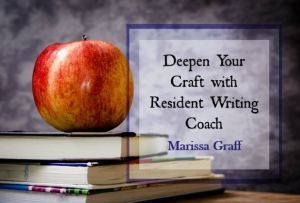
One of the most powerful tools in a writer���s toolkit is a scene tracker, also known as a scene map. Whether you���re drafting or you���re looking to revise a finished draft, there is no better way to simultaneously evaluate the efficacy of individual scenes and your story���s full internal and external arc.
I was first introduced to the concept of scene tracking by Martha Alderson, the author of many craft books including The Plot Whisperer. A scene tracker is simply a table that includes every scene of your book, distilled to the most critical elements. It���s a way to ensure that each scene is pulling its weight. It���s also a way for a writer to see how the scenes are connecting, whether there���s an ebb and flow to losses and victories, and to track the growth of the protagonist.

Although Alderson recommends tracking 7 critical elements, the elements a writer chooses to track are ultimately up to them. Among the ones that I recommend as a starting point are:
Summary: This is a one-sentence gist of what happens in the scene, mainly so you can mentally keep track of which scene you are referencing. As a benefit, this may pay off later when writing a synopsis.Goal: What does the protagonist enter this scene wanting? This is probably not the same as the novel-length goal you���ve given them. This is a scene-level goal that represents a smaller step in reaching their larger goal. You���ll want to make sure that your answer to this question varies scene after scene.Conflict/Dramatic Action: In the scene, what obstacle gets in the protagonist���s way, challenging their ability to reach the scene goal? While I usually put these two together, Alderson separates these into two columns on her scene tracker. She suggests the simple use of a checkmark to verify conflict is present. But she also includes dramatic action to explore what happens in the scene. It���s helpful to think in concrete terms as to what is blocking your protagonist���s path. That way, you avoid repeating the same obstacles and progressively raise the stakes.Emotional Change: As a result of the scene���s primary external event, how does the protagonist���s inner state change? Alderson discusses this as being as simple as thinking of this as a +/- change, or you can identify in specific terms how the character felt entering the scene, as well as how they felt exiting the scene. This is especially helpful so you can balance the victories and the defeats your character experiences.Effect/Character Development: What new understanding does the protagonist gain about the plot, themselves, or both as a result of the scene? By the way, this is not the same as linking your scenes via cause and effect. Think of this more as answering how this scene impacts the protagonist. This is, in my opinion, the most critical element. It tells you why this scene matters and must be a part of the story.If you find yourself struggling to fill in any of these areas, it���s almost always a sign a scene is weak. Perhaps it���s duplicitous to a previously-written scene, or the conflict within the scene isn���t strong enough to yield emotional change or character development. Sometimes, scene tracking reveals that you haven���t made the character���s scene-level goal clear enough, or that you aren���t challenging your protagonist meaningfully.
One huge benefit to scene tracking is that you can ���read between the lines.��� You can see how your scenes link together if you follow your answers from one scene to the next. The events and outcome of one scene should naturally lead to what the character goes after and how they enter the next scene. This helps you be sure your plotting is being done tightly.
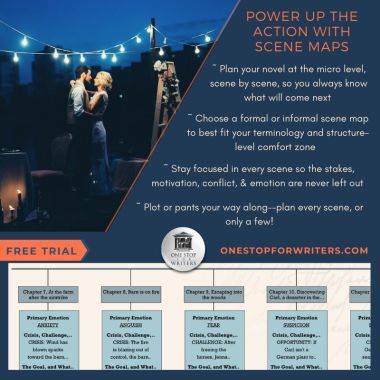
Martha’s process for tracking important elements in our scene is only one option. For instance, One Stop For Writers features two scene tracking tools (called scene maps) that include the important elements to keep an eye on. One is informal, while the other is formal. Both are customizable and fabulous.
Of course, you can add to the list of elements to track, depending on your novel and your needs as a writer. For example, it may be helpful to track how often a secondary character is appearing or what clues you���ve provided about a mystery that you are revealing.
You can add settings or dates to your tracker as Alderson suggests, or even theme.
Do you already use a scene tracker? Which elements do you track for your novel? Do you find a certain element particularly helpful? If you don���t use a tracker, can you see benefits to doing so?
 Marissa GraffResident Writing Coach
Marissa GraffResident Writing CoachMarissa has been a freelance editor and reader for literary agent Sarah Davies at Greenhouse Literary Agency for over five years. In conjunction with Angelella Editorial, she offers developmental editing, author coaching, and more. Marissa feels if she���s done her job well, a client should probably never need her help again because she���s given them a crash-course MFA via deep editorial support and/or coaching.Website | Twitter | Instagram | Facebook
The post Power Up Individual Scenes with a Scene Tracker appeared first on WRITERS HELPING WRITERS��.
May 8, 2021
Relationship Thesaurus Entry: Best Friends
Successful stories are driven by authentic and interesting characters, so it���s important to craft them carefully. But characters don���t usually exist in a vacuum; throughout the course of your story, they���ll live, work, play, and fight with other cast members. Some of those relationships are positive and supportive, pushing the protagonist to positive growth and helping them achieve their goals. Other relationships do exactly the opposite, derailing your character���s confidence and self-worth or they cause friction and conflict that leads to fallout and disruption. Many relationships hover somewhere in the middle. A balanced story will require a mix of these dynamics.
The purpose of this thesaurus is to encourage you to explore the kinds of relationships that might be good for your story and figure out what each might look like. Think about what a character needs (good and bad), and build a network of connections for him or her that will challenge them, showcase their innermost qualities, and bind readers to their relationship trials and triumphs.
 Best Friends
Best FriendsDescription: Best friends have each others’ backs. While this relationship usually consists of two people, it can consist of a wider group of besties. This kind of friendship can look different for men and women, but themes of loyalty, respect, and enjoying each other’s company are largely universal.
Relationship Dynamics:
Below are a wide range of dynamics that may accompany this relationship. Use the ideas that suit your story and work best for your characters to bring about and/or resolve the necessary conflict.
Spending as much time together as possible
Being each other’s wingman (or woman)
Talking often via phone or text
Calling the best friend first when advice is needed
Sharing personal milestones (celebrating birthdays together, going to a kid’s graduation, etc.)
Knowing the important people in each other’s lives (kids, spouses, etc.)
Actively supporting each other in times of trouble (when one person hospitalized, the death of a parent, etc.)
Sharing the same interests or hobbies
Sending random emails or texts
Defending each other in the face of criticism or attack
Knowing each other intimately
Being able to be honest and shoot straight with each other
Having a history together
Not talking often but being able to pick up right where they left off (if the relationship is long-distance, for instance)
Avoiding topics on which the two don’t see eye to eye
Having an affirming relationship where nothing unpleasant or difficult is discussed
Conflicting Desires that Can Impair the Relationship
One person wanting truth and honesty while the other only wants encouragement
Both parties going after the same thing (a love interest, a job, their kids trying out for the same student leadership position, etc.)
One person wanting to spend a lot of time together while the other wants more space
One party expecting blind and unconditional loyalty from a friend who tends to be more objective
One person wanting to know everything about a vulnerable friend who wants to keep to themselves
One friend seeking to expand their circle of friends while the other wants to keep things intimate
Clashing��Personality Trait��Combinations: Adventurous and Timid, Cautious and Reckless, Efficient and Scatterbrained, Extroverted and Introverted, Generous and Greedy, Independent and Needy, Optimistic and Pessimistic, Persuasive and Weak-Willed
Negative Outcomes of Friction
One person having increasingly negative thoughts about the other
Two friends distancing themselves and not being as close
Decreased trust
One friend in a trio or quad being slowly pushed out
Friends becoming more different instead of more alike
Having more and more things that become taboo to talk about
The relationship becoming imbalanced, with one friend being more loyal, generous, or forgiving than the other
Drifting apart until the friendship eventually fades away
A “final straw” fight that causes a quick and hostile end to the friendship
Ways This Relationship��May��Lead to Positive Growth
Mutual respect making both parties more open to each other’s ideas
One friend seeking to become more like the other (in a positive way)
One friend lovingly pointing out an area of weakness that the other person is able to work on and improve
Friends who are very different expanding their knowledge (of each other’s culture, religion, nationality, etc.)
One friend encouraging the other to take a leap of faith or a big risk
Themes and Symbols��That Can Be Explored through This Relationship
Beginnings, Betrayal, Coming of Age, Crossroads, Endings, Family, Friendship, Journeys, Love, Passage of Time, Refuge, Unity
Other Relationship Thesaurus entries can be found here .
 Need More Descriptive Help?
Need More Descriptive Help?While this thesaurus is still being developed, the rest of our descriptive collection (15 unique thesauri and growing) is accessible through the One Stop for Writers THESAURUS database.
If you like, swing by and check out the video walkthrough, and then give our Free Trial a spin.
The post Relationship Thesaurus Entry: Best Friends appeared first on WRITERS HELPING WRITERS��.
May 6, 2021
Setting Yourself up for Success Before You Write a Single Word
As a lifelong student of storytelling, most of my posts are about the craft. After all, knowing how to best develop our story vision and put it on the page? Kind of a big deal. But there���s an important step to writing that we need to think about before all that structure, characterization and technique stuff: Prepping our writing space to make magic.

Because that���s our job, folks���making magic.
(Seriously, we are all so lucky to do what we do!)
But what do we really need other than a keyboard or writing device? The story���s inside us, swirling around in some nebulous fold of brain matter, after all. We should be able to just grab that laptop and download our genius…right?
If only it was that easy. Unfortunately though, writing is hard. Sometimes thrust-a-screwdriver-in-my-eye hard. So thinking about how to set ourselves up for success as we sit down to write is a smart thing to do.
Let���s Talk about Where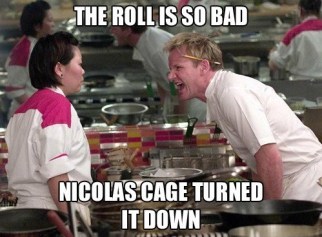
Imagine Gordon Ramsay rustling up a 5-star meal���in your child���s bathroom. Sure, he���s got what he needs ��� those fresh, farm-to-table ingredients, a hot plate to cook on, his thousand-dollar knife set, and a chef-in-training to swear at.
But as he swats bath toys and action figures off the sink area to prep, and his pristine chef���s sleeve drags through a smear of stripey-fun kiddie toothpaste, how inspired do you think he���s going to be? Will this be the best meal he���s ever plated? Will he look down at it with pride? I doubt it.
Now that meal will be ten times better than anything you or I can cook, but it’s going to be missing something vital: passion.
Chef or writer, we���re all creators. And where we create impacts our mood.
Now if we all had the choice, we���d design expansive libraries, free-standing writer huts, or maybe a hidden writer���s room with its own secret entrance. But yanno, money. Family. Cats, dogs, and kids. Our lives are busy, and our homes are too, so we have to make do with what we have. But whether we have an actual writing office, a kitchen desk nook, or a closet-slash-writing cave-slash-podcasting station, there are ways to make it special, and that���s what we should do.
Let���s Talk about Why
No matter what you choose for your writing spot, it���s important to make it your own. When a space is set up the way we like it, slipping into the creative zone is so much easier���and it helps us stay there, too. So once you stake your claim, clear out the clutter as much as possible and replace it with things that inspire you. Do you like to be surrounded by your favorite books? Swap out that shelf of old work binders for your favorite paperbacks, the ones your books will sit next to one day. And if you’re published already, put those books where you can see them!
Think about what helps you slip into the story world. Do you have a collection of fantasy creatures? Posters of your favorite movies? An eclectic painting that draws your eye and soul? Bring these feel-good things into your space. (I have a rather ridiculous collection of owls ���including a few undead ones– but they make me smile, and act as my book guardians. Much better than seeing nothing but stacks of paperwork and piles of laundry whenever I look up from the screen to reflect on what to write next!)
Let���s Talk about AmbianceWe���re individuals, so different things help get us into the mood to write. Sensory stimulation can be used to alter our mindsets and help us find our creative comfort zone. For example, sound. When you write, do you like music, silence, or a TV playing in the next room? How about visuals? Do you find inspiration in bright colors and fairy lights, or do you prefer muted colors and stylish organization that would be right at home in a decorator���s magazine? What else… Plants, yes or no? A scented candle? Coffee or tea? A certain snack?
Our brains are hardwired to process sensory information, remember the experience, and use it to navigate future situations. Basically we associate feeling creative, focused, and ready to write with our senses, and our brains remember. So brew the tea, light the candle, pull out your story planning book, and call up your manuscript onscreen. This pattern will signal your brain that it���s time to write!
Let���s Talk about the Tools of the TradeDear Gordon needs his pans, knives, and temperature-sensitive ovens to produce his best work, and writers need certain tools, too. Again, we’re all different, but here’s a list to get you thinking about what might help you create.

A good chair. Please, do yourself a solid and get something comfortable and back-friendly. You’re going to spending a ton of time plunked down in front of the screen and if you’re uncomfortable, guess what? You’ll get up and go do something easier like rebuilding your car’s engine or knitting a sweater out of cat hair. Sure, you want to get up once in a while to stretch, exercise, eat something healthy-ish and have a life, but remember, butt-in-chair = words, stories, novels.
A story portal. You know, a PC, laptop, typewriter, longhand writing pad and pen… whatever helps you get that story out of your head and onto the page. You might also find a specific writing program like Scrivener, Word, Google Docs, etc. helpful. Here’s a list.
Pens, pens, pens. Need I say more? Choose ones that flow well and feel great in your hand. Gel pens, colored ink, whatever blows your hair back.
Notebooks. Again, like I even need to list this one. You hoard them, I know. Use them to plan, play with scenes, capture your character details or plot points. Draw in them if you like or make a map. Notebooks make us feel good because we can do whatever we want and no one is judging what we write. (Plus, the covers can be so pretty! They can’t help but inspire us and remind us of the magic we’re trying to create.)
Research Bookmarks. As you let ideas soak and plan your story, chances are you’ll be prancing merrily around the internet looking up interesting bits and bobs for your story. Like a list of mythical creatures. Or how to dissolve a dead body with water and lye, you know, for story research. (Hey, I’m not here to judge.) My point is, save those links in a collection using Evernote, Pocket, Mix, a Pinterest Board, or within a specific folder under your system’s bookmarks. When you need inspiration, browse those bookmarks!
Story Creation Tools. There are plenty of great tools out there to help you plan, write, and revise a novel. If you want to build characters, plan worlds, outline your plot, manage timelines, etc. all in one place Becca and I created the One Stop for Writers library. Other tools I recommend looking into are Trello (great for organizing ideas), ProWritingAid (clean up your writing so it’s as strong as can be), and Fictionary (double-check your story structure & more to see if you’re on the right track). Also to avoid distraction, try Freedom and if you want to get in the mood to write each scene you can find music for every mood (be it suspenseful, happy, mysterious, creepy, etc.) here (
Your Reference Books. We all have books we like to have on hand – they might be fiction, or craft books. If you find yourself using certain books over and over, have them within reach as you write.
The Essentials. Yes, that’s right…snacks. Have something nearby so you don’t use a trip to the fridge as an excuse to procrastinate. Don’t forget something to drink, too. (Pour yourself a glass of water now and then instead of pop or coffee. It won’t kill you, I promise.)
Remember, Your Mindset Is the Key to Writing Success.
Whether you write at home, at a coffee shop, or somewhere else, think about how you can tailor your space to you. Decorate your laptop with writerly stickers. Choose a screensaver that evokes your imagination. Big or small, making your writing environment more inspiring will help you focus and bring your creative A-game to the page.
TIP: For more Creativity & Mindset help (including how to kick Writer’s Block and Procrastination to the curb) swing by this resource page.Have any other essentials you’d add to this list? Let me know in the comments!
The post Setting Yourself up for Success Before You Write a Single Word appeared first on WRITERS HELPING WRITERS��.
May 4, 2021
Balancing Your Cast of Characters
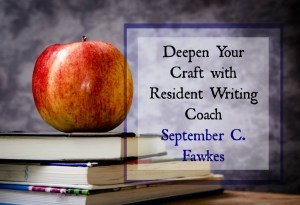
By September Fawkes
Affiliate links below
It’s no secret that side characters can be amazing in their own right. Great side characters feel like real people–even if the focus isn’t on them. They have lives that exist beyond the scope of the protagonist. When they seem to exist only to help or exacerbate the protagonist, they lack authenticity.

With that said, untamed side characters can water down a strong story, or worse, steal the story. While we don’t want our characters to be exact copies of each other (unless, of course, you’re writing a story about characters being exact copies), it can be helpful to examine the main character and his or her journey to bring balance, depth, and meaning to your cast. After all, side characters are also called supporting characters, which means they are meant to support the protagonist’s journey, not take away from it.
In her book, Story Genius, Lisa Cron explains that while we need to develop secondary characters that have their own driving agendas, realizations, and often, own arcs, we also need to create them with this purpose in mind: “to help facilitate the protagonist’s story.”
She writes, “This means that although each one of them could stand alone as a full-fledged human being . . . you’ll create them and their beliefs so they will naturally facilitate your protagonist’s story.”
Consider what role the character plays in the protagonist’s journey, and develop the character with that in mind. What kind of qualities and attitudes are going to challenge your protagonist? What does your protagonist need to learn from this person? Who would uncover a new side of your protagonist? It’s possible to fully brainstorm a side character who actually doesn’t interact well with your protagonist. But when you consider these questions and similar ones, you’re more likely to create a side character who offers meaningful exchanges.
(Explore different types of character relationships here.)

If the character is an ally, some writers feel compelled to make him or her too similar to the protagonist. In reality, it’s often more interesting if the ally contrasts the protagonist. In Pixar’s Soul, the protagonist, Joe Gardner, has a thirst for life (jazz, specifically), but he is allied with 22, who has no desire to even be born. This contrast brings each character into sharper focus, balances out the story, and provides more opportunities for meaningful discussions.
Likewise, if the character is an opponent, it’s often more effective to emphasize a likeness between that character and the protagonist. In Soul, Terry functions as the antagonist, trying to bring Joe to the Great Beyond. Like Joe, Terry is so obsessed with fulfilling his purpose (to count the dead), that he’s blind to the inspiring things happening around him: Joe helping 22 finally find her spark. Like Joe, Terry is also aspiring to a moment of recognition–he wants the Jerries to recognize him with an award for him doing his job.
It may be helpful to consider much of the side characters as foils and mirrors of the protagonist and his situation. We can see how this balances out in Soul. Joe’s mom foils him by pressuring him to take a practical job. On the other hand, Dorothea Williams reflects what Joe wants to become. Dez foils Joe by letting go of his veterinarian dreams and becoming a barber. Connie reflects his passion for music. Paul foils by being someone who never went after his dreams. . . .
In a sense, each of these characters represents a different moment of or outcome to the journey Joe is on. In his book, The Structure of Story, Ross Hartmann refers to these characters as clones (a term that comes from award-winning screenwriter Brian McDonald). Hartmann writes, “a clone character . . . is a way for us to show what could, should, or might happen to a character if they take a particular path. . . . [We can] use a clone character to convey information about where the character is headed or might be headed either philosophically, emotionally, or physically.”

The supporting cast is also more balanced when it contains different types of arcs, which tap into the protagonist’s journey. A character may change positively or negatively, or hold steadfast (remaining more or less the same) positively or negatively. In the film, Marley & Me, the protagonist, John, changes positively as he learns to embrace the adventures of domestic life. Marley, who already embraces the adventures of domestic life, remains the same, positively, throughout the film. John’s friend Sebastian dismisses domestic life to go on career-driven adventures instead, remaining the same negatively. Had the filmmakers wanted to, they could have added a fourth character who leaves the adventures of domestic life to fully focus on her career, which would have been a negative change character (within the context of the story).
Because the protagonist’s journey also plays into a story’s theme, balancing out your cast with your protagonist in mind, can help keep your side characters thematically relevant. For more on that topic, I suggest reading “Use Theme to Determine Subplots, Supporting Characters, and Tension.”��
In any case, creating your supporting characters with your protagonist in mind, will likely lead to a more meaningful, balanced cast, and story.
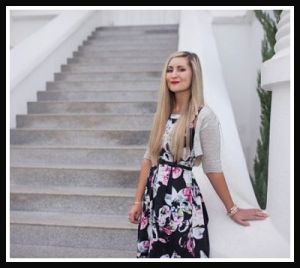 September C. FawkesResident Writing Coach
September C. FawkesResident Writing Coach September C. Fawkes has worked as an assistant to a��New York Times��bestselling author and writing instructor, and now does freelance editing at FawkesEditing.com. She has published poetry, short fiction, and nonfiction articles, and her award-winning writing tips have appeared in classrooms, conferences, and on Grammar Girl. Grab this AMAZING guide on Crafting Powerful Protagonists at her website and find her on
Twitter �� Facebook �� Instagram �� Tumblr
The post Balancing Your Cast of Characters appeared first on WRITERS HELPING WRITERS��.
May 1, 2021
Relationship Thesaurus Entry: In-laws
Successful stories are driven by authentic and interesting characters, so it’s important to craft them carefully. But characters don’t usually exist in a vacuum; throughout the course of your story, they’ll live, work, play, and fight with other cast members. Some of those relationships are positive and supportive, pushing the protagonist to positive growth and helping them achieve their goals. Other relationships do exactly the opposite���derailing your character’s confidence and self-worth���or they cause friction and conflict that leads to fallout and disruption. Many relationships hover somewhere in the middle. A balanced story will require a mix of these dynamics.
The purpose of this thesaurus is to encourage you to explore the kinds of relationships that might be good for your story and figure out what each might look like. Think about what a character needs (good and bad), and build a network of connections for him or her that will challenge them, showcase their innermost qualities, and bind readers to their relationship trials and triumphs.

Description: an in-law relationship occurs when a marriage or like-union occurs, bringing two families together. The partners in the relationship join the family of their other half and a bond of respect, tolerance, and (hopefully) love. But while the partners choose one another, the family members “come with the package” so to speak, meaning personality or ideological clashes can often cause friction.
Relationship Dynamics:
Below are a wide range of dynamics that may accompany this relationship. Use the ideas that suit your story and work best for your characters to bring about and/or resolve the necessary conflict.
Showing genuine interest in the other’s passions, likes, beliefs, etc.
Engaging in polite conversation
Complimenting the other (on house improvements, a garden, a choice of car, etc.)
Asking about the other’s family members, job, vacations, activities
Pitching in to help when asked (childcare, helping with a move or repair)
Avoiding contentious topics to keep the peace
Offering advice, encouragement, and praise
Asking the other for their opinion or to weigh in with experience
Offering help without expectation or strings
Sharing stories about the loved one in common
Gentle information-gathering about possible changes, or areas of concern
Telling jokes or sharing funny stories
Discussing current events, politics, popular movies, books, or pop culture
Celebrating birthdays, anniversaries, graduations, and other family events together
Sharing meals or enjoying an outing together
Talking about kids (if there are any)
Prying into the other’s business
Offering unsolicited or unwelcome advice
Feeling judged by the in laws and that one doesn’t measure up
Suspecting the other is holding back information or lying due to a grudge
Believing the other is trying to drive a wedge between the character and the loved one in common (a husband and wife, a mother and daughter, etc.)
Guilt trips: You never come to visit, Sarah’s other grandparents always get her for Christmas and we never do, why do you always stay at Bill’s house and never ours when you come to town, etc.
Reminding the other of their mistakes or bringing up a past embarrassment
Snide remarks, haughtiness, talking down to the other, arguments
Forcing other relatives to take sides
Asking for something that’s inappropriate (money, to lie for them, etc.)
Going behind the other’s back and them lying about it
Interfering with how the character raises their kids
Refusing to respect rules because they disagree with them
Making the other feel small (only begrudgingly offering aid or financial support, etc.)
Making demands and ultimatums: If you want to see your grandchildren ever again…
Ignoring the other’s boundaries
Voicing disappointments to make the other feel bad
Conflicting Desires that Can Impair the Relationship
A parent who doesn’t like their child’s spouse trying to seed discord so they break up
Believing the other is a threat, which leads to constant friction
Control issues (over how children are raised, how the other lives, choices that affect family members in common)
The in laws wanting to have a say in everything and the character wishing for autonomy
Disagreements over where to settle down (in laws wanting the couple close when the couple doesn’t share this desire)
Clashing Personality Trait Combinations: Controlling and Independent, judgmental and oversensitive, stingy and generous, proper and rebellious, inflexible and spontaneous, nosy and private, gullible and intelligent
Negative Outcomes of Friction
Family feuds
A tug-of-war over the loved one, forcing them to become the peacemaker
Unwelcome family drama that ruins a special event (a wedding, for example)
Refusing to attend family events if the “other” is there
Problems with an in law causing problems in other important family relationships
Developing anxiety and/or struggling with self-worth
Fictional Scenarios That Could Turn These Characters into Allies
When a loved one is in trouble and family members rally
If there’s a crisis and everyone sets aside their differences to help
When an intervention needs to happen (addressing a drug issue, hoarding, etc.)
When the support and love of a child/grandchild is the focus
Discovering something in common that brings the two together (a shared interest or passion, a shared trauma that leads to deeper understanding and respect, etc.)
Showing a unified front when the family is targeted by others
Ways This Relationship May Lead to Positive Change
The passing of valuable knowledge and insight helping the character navigate a tough situation
Feeling part of a family if this is something they lacked growing up
An opportunity to experience a different type of relationship and grow because of it
Having an opportunity to do things differently (a do-over with a son-in-law when they are estranged from their son, for example)
Themes and Symbols That Can Be Explored through This Relationship
Alienation, A Quest for Knowledge, Betrayal, Borders, Coming of Age, Death, Disorder, Endings, Family, Friendship, Illness, Instability, Knowledge, Loss, Love, Peace, Perseverance, Pride, Rite of Passage, Sacrifice, Teamwork, Unity
Other Relationship Thesaurus entries can be found here.
 Need More Descriptive Help?
Need More Descriptive Help?While this thesaurus is still being developed, the rest of our descriptive collection (15 unique thesauri and growing) is accessible through the One Stop for Writers THESAURUS database.
If you like, swing by and check out the video walkthrough, and then give our Free Trial a spin.
The post Relationship Thesaurus Entry: In-laws appeared first on WRITERS HELPING WRITERS��.
April 29, 2021
How to Write Emotion Well: Know Your Character
We’ve all read stories where our breath slows, the world falls away, and the page disappears. We’re somewhere else, a place that isn’t real, yet is. We’re with people who don’t exist, yet somehow do. We see what they see. Feel what they feel. We are in the moment, captive, compelled, not just reading words, but living them.

When we come up for air, as writers, we sort of sag in place, awed by the power the author had over us. It’s beautiful and enviable, this story sorcery. We want it for ourselves, of course. Thankfully, we know what it is. We even have a name for it: emotion.
Emotion is the bridge between characters and readers. It’s what draws the latter out of the real world and into the fictional one.And above all else, it’s the one thing storytellers MUST get right.
We know how important emotion is to story, and we want to write it in a way that grips readers, whether it���s rage or fear, amusement or curiosity. Our universal goal is to show the character’s feelings in a way that rings true – readers recognize the emotion, connect with it, and share this emotional moment with the character in a way that’s meaningful.
It’s a tall order, especially when we feel like all our characters tend to express emotions in the same way. You know, the smiles, frowns, and smirks. The racing heartbeats. The shuddery breaths.
(Did you wince a little? It’s okay. We all have expressions we tend to overuse.)
Becca and I created The Emotion Thesaurus to help writers brainstorm unique ways to show any emotion, but having lists of body language, thoughts, visceral sensations and vocal cues is really just the starting gate. Each idea we provide needs to be tailored to a character if it is to become an authentic portrayal of their most honest feelings.
And here lies the biggest reason why emotion fails to draw readers in: the writer hasn’t gotten to know their character well enough to create tailored responses.Your Character Is Unique…Their Emotional Responses Will Be, Too
We are all individuals, right? What makes us anxious, happy, jealous, etc. may be different, but even if an event triggered the same emotion for all of us, our reactions would still be unique. Put us both in a hospital waiting room as a loved one undergoes a risky surgery, for example. I might be a pacer, unable to sit still. I might go to the reception counter several times to ask questions they can’t answer, constantly text my family to keep them in the loop, and then discovering my phone battery has entered single digits, be unable to control the shrillness of my voice as I beg staff to use a hospital charger. You, on the other hand, might sit and not move, not for hours, frozen in time. Only your fingers are active, mercilessly picking at your cuticles until they bleed, completely unaware of the damage you’re doing to them.
Like us, our characters will have their own way of processing emotion, and to understand what that will look like, we need to know more about who they are.
Know Their PastThe people and situations from a character’s past will influence their behavior and who they ultimately became. A nurturing grandfather may have taught patience and encouraged the character to think things through before making decisions. A high-achieving parent might have instilled the idea that fortune favors the bold, and any action is better than none. Imprints are powerful. Think about who was influential in your character’s life, and how their worldview, beliefs, values (or lack) may have shaped your character.
Know Their ExperiencesPeople have survival instincts, and your character will, too. Hardwired to watch for danger, experience informs your character, helping them spot potential problems as they go through life. Bad experiences may have made your character risk-adverse, and good ones, the opposite. Do you know how past positive and negative interactions steer them now? Do they invest their time, money, and hearts freely…or utterly refuse to?
Know Their Pain
Painful experiences can scar, not only physically but emotionally. The fear of pain is powerful, but the fear of emotional hurt can derail a person’s goals, damage relationships, make them avoid certain things, and leave them unhappy and unfulfilled.
Knowing your character’s emotional wounds will guide you to understanding what emotions they are sensitive to because those feeling bring them back to that past event that cut them deeply. When these emotions are triggered, your character will have a hard time controlling their responses and their behavior will become more volatile. They will become prone to negative coping mechanisms that can damage their life further.
Know Their PersonalityAnother facet of humanity is our personality. Certain traits, positive and negative, become part of us and help us solve problems, interact with others, and navigate life. Personality traits come with certain behaviors and inclinations, so knowing what these are will really help you line up emotional responses that fit a character’s personality like the proverbial glove.
Know Their Emotional RangePersonality, genetics, experiences, and personal preferences will create an emotional comfort zone of expressiveness. Understanding how a character behaves in everyday situations serves as your ground zero. Are they open and transparent with strangers, or protective of their thoughts and so keep to themselves? Do they talk a lot, or must words be pulled out of them? Do they make big movements, gesture as they speak, tell jokes, and revel in attention? Or do they listen rather than speak, choose stillness, and only shift and fiddle when put on the spot?

Once you get a feel for “typical” behavior it serves as a baseline and you can make sure their actions, choices, and decisions line up with these preferences. The baseline will become part of their emotional range, helping you plan what a typical response will look like vs. an extreme one. In this way, their responses will always ring true to readers!
Peel Back a Character’s Layers & Showing Emotion Gets EasierDescribing emotion in a way that readers will feel something isn’t easy, but it becomes easier when you really know who your character is and what’s steering their emotions. The more you unearth about someone, the more you will intuitively know what their actions, choices, and behaviors will look like, achieving that authenticity that hooks readers. So grab a notebook and start thinking about the things above, or use a tool like the Character Builder to help you.
Speaking of Emotion…Today Only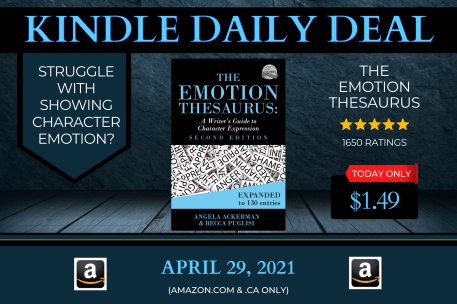
The Emotion Thesaurus Expanded Edition is Amazon.com & Amazon.ca’s Kindle Deal of the Day! So, if you’d like help with describing the body language, thoughts, visceral sensations, and vocal cues for 130 emotions, today’s the day to grab it. It’s only $1.49!
Want to see what emotions are included in this book, and how we’ve added more content to every entry? Here’s the list of emotions.
Happy writing!
The post How to Write Emotion Well: Know Your Character appeared first on WRITERS HELPING WRITERS��.
April 27, 2021
Using TikTok to Sell Books
Because marketing is a challenge for many authors, Angela and I talk quite a bit about it, sharing tips on how to grow audiences on various platforms. One we don’t use is TikTok, and, frankly, we’d have no idea how to find readers there. Thankfully, Dominika Pin���a teen author with an impressive following there���has that info for us.

Almost every teenager in the United States knows about TikTok���the video-sharing social media platform with hundreds of millions of active users. And with the increasing popularity of the #BookTok hashtag, which readers use to talk about their favorite books, many YA authors are turning to TikTok to promote their work.
I began posting on the platform in August of 2020 and have since amassed nearly 225,000 followers (a number that is still growing by hundreds each day). TikTok makes it incredibly easy to go viral with minimal effort. Just one fifteen-second video can get you tens of thousands of followers; all you need is a decent strategy. Here are some tips that earned my videos millions of views:
1. Use Hashtags to Your AdvantageMany users believe that using popular hashtags (such as #fyp) will be enough for them to go viral. That isn���t entirely true. While there is a slight chance those hashtags will give you thousands of views, it is highly unlikely they will help you reach your target audience. Using hashtags such as #author, #writingabook, or anything relating to your genre will be much more effective. The first video I posted with those hashtags garnered nearly half a million views.
2. Post ConsistentlyIf one of your videos does go viral and you disappear off the platform for the next few weeks, you���ll probably end up losing hundreds of followers. Your goal should be creating bonds with your fans so they���ll feel more inclined to buy your books, and one way to do that is posting at least once a day.
3. Don���t Just PromoteBelieve me when I say this���nobody wants to hear you blatantly promote your book 24/7. A promotional post once in a while is fine, but your followers will get bored if everything on your page is just you talking about your book. Keep your content related to writing, but switch it up. One way to do that is by posting writing tips. Those are amazing choices for videos because they give you credibility. Not to mention, if you help someone with their writing, they’ll want to repay you in any way they can���like buying your book. Half of my followers wouldn’t be following me if it wasn’t for my writing tips.
4. Use Trending SoundsThis is probably the #1 factor that will help boost your videos. If you see that a sound has over ten thousand videos under it (most of which are recent), use it. You can even put it over a video of you talking (just lower the sound to zero if you don���t want it to be heard) and it will still boost your views.
5. Appeal to the Current TrendsScroll through #BookTok for a bit and find what���s trending. If you see videos of readers swooning over slow-burn romance, make a video about the slow-burn romance in your book. Similarly, if you see someone praising the strong heroine in a popular novel, create a video depicting your book���s strong heroines. Show people what popular tropes your book includes to persuade them to buy it.
6. Post Scenes from Your Book in Second PersonThis is a very clever tactic that filled my comments with people eager to read my book. Take an intriguing scene from your book (for me, it was my main character dancing in a ballroom), add a matching sound over it, and change it up to second person so whoever is reading feels like the action is happening to them. In the caption, you can add something like, ���Scene from my upcoming book, ____���.
@the.teen.writer7. Have Your Fans Promote ItPOV: You���re reading my book
��� Originalton – Violutionn#writer #bookish #booktok #book #dark #aesthetic #ball #royal #imagine #fantasy #teenwriter (ic: @ava_herondale. Tysm!)
Once you publish a book, ask your fans to promote it for you. Many of them have platforms with thousands of their own followers. For instance, you can ask them to act out their favorite scene from your book and offer a free signed copy to the creator of your favorite video.
At the end of the day, marketing is a difficult task; especially if you���re simultaneously working on several projects. Posting on a popular app like TikTok could build you a fandom faster and quickly move your book up the charts. It only takes a couple of minutes to make a TikTok video. And if you do it well, it might just make you a best-seller.

Dominika Pindor is an author from Illinois. While developing her social media presence, she inspired hundreds of young people to write their own stories. She published her debut novel, Wings and Shadows, in March of 2021. You can find her online at TikTok.
The post Using TikTok to Sell Books appeared first on WRITERS HELPING WRITERS��.
April 24, 2021
Relationship Thesaurus Entry: Caregiver and Client
Successful stories are driven by authentic and interesting characters, so it���s important to craft them carefully. But characters don���t usually exist in a vacuum; throughout the course of your story, they���ll live, work, play, and fight with other cast members. Some of those relationships are positive and supportive, pushing the protagonist to positive growth and helping them achieve their goals. Other relationships do exactly the opposite���derailing your character���s confidence and self-worth���or they cause friction and conflict that leads to fallout and disruption. Many relationships hover somewhere in the middle. A balanced story will require a mix of these dynamics.
The purpose of this thesaurus is to encourage you to explore the kinds of relationships that might be good for your story and figure out what each might look like. Think about what a character needs (good and bad), and build a network of connections for him or her that will challenge them, showcase their innermost qualities, and bind readers to their relationship trials and triumphs.

Description: There are moments in time when caregivers are needed. If your character is elderly, injured, recovering from surgery, mentally disabled, or a pregnant woman on bedrest, someone may be hired to help them out. Caregivers can be round-the-clock and live-in helpers or they might come during certain hours when family members aren’t available. They might be hired for a limited period of time or in perpetuity. They may be a professional caregiver or a neighbor or friend of the family who is hired to do the job. Regardless of the details, this relationship is based implicitly on trust, with a vulnerable party depending on someone to meet their most basic needs.
Relationship Dynamics:
Below are a wide range of dynamics that may accompany this relationship. Use the ideas that suit your story and work best for your characters to bring about and/or resolve the necessary conflict.
A more personal relationship where both parties express an interest in each other’s lives
A caregiver who sees and does whatever needs doing, even if doing so takes them outside their scope of duties
A purely professional relationship, with the caregiver clocking in, doing their duties, and clocking out as needed
A client who treats the caregiver as a servant or lackey
A caregiver who meets their client’s needs while secretly taking advantage of them behind the scenes
An apathetic caregiver who’s only in the job for the paycheck
A client struggling with a lack of control or dissatisfaction with their circumstances taking their frustrations out on the caregiver
An abusive relationship, one way or the other
A healthy relationship that is undermined by interfering, selfish, or drama-seeking family members
Conflicting Desires that Can Impair the Relationship
A willing caregiver being paired with an uncooperative client who resents their loss of freedom, mobility, etc.
A caregiver who wants to help their client become more independent working with someone who is content to let others do everything for them
A caregiver who wants to help the client as they were hired to do, and a client who wants the caregiver to take on responsibilities outside their scope of work
A client who doesn’t want help attempting to drive away a willing caregiver
A client who just wants their basic needs met being fleeced by a manipulative, scheming, or dishonest caregiver
A client desiring more emotionally than the caregiver wants to provide
Clashing Personality Trait Combinations: Responsible and Uncooperative, Courteous and Disrespectful, Discreet and Gossipy, Independent and Needy, Persuasive and Gullible, Controlling and Weak-Willed
Negative Outcomes of Friction
A client’s condition worsening because they don’t get along with their caregiver
The caregiver losing their job
A fussy client going through one caregiver after another and not receiving the treatment they really need
Someone being treated disrespectfully
Growing resentment, frustration, or anger
One party taking a submissive role and being mistreated
An abused or mistreated client not speaking up and getting help because they need a caregiver’s assistance
Friction with family members who must step in and take over duties when a caregiver leaves or is fired
Fictional Scenarios That Could Turn These Characters into Allies
A goal that will benefit both parties, such as the client regaining driving privileges or being able to bathe independently
Working toward the client being able to care for themselves without needing a caregiver
Both parties seeking to piss off a mutually annoying relative
Engaging in a charitable activity that both are passionate about but doesn’t benefit either of them personally
A situation in which one party uses their specific knowledge or skills to help the other party on a personal level (such as an ex-math teaching helping a caregiver with a college-level class)
Ways This Relationship May Lead to Positive Change
A client who resists help learning to accept it
A client or caregiver who sees themselves as superior is able to learn from the other party
The client may regain health or independence through their cooperation with the caregiver
Through a positive and respectful relationship, one party may recognize toxicity with others in their life, and seek out better relationships in the future
An emotional need may be filled, such as a caregiver who was orphaned seeing their client as a parental figure, or the caregiver filling the role of the client’s estranged child.
Themes and Symbols��That Can Be Explored through This Relationship
Beginnings, Betrayal, Depression, Endings, Freedom, Friendship, Health, Hope, Illness, Loss, Passage of Time, Refuge, Stagnation, Suffering, Vulnerability
Other Relationship Thesaurus entries can be found here.
 Need More Descriptive Help?
Need More Descriptive Help?While this thesaurus is still being developed, the rest of our descriptive collection (15 unique thesauri and growing) is accessible through the One Stop for Writers THESAURUS database.
If you like, swing by and check out the video walkthrough, and then give our Free Trial a spin.
The post Relationship Thesaurus Entry: Caregiver and Client appeared first on WRITERS HELPING WRITERS��.
April 22, 2021
4 Tips for Writing Your Character’s PTSD and Trauma Memories
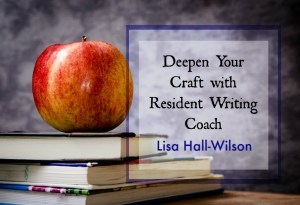
Trauma: any event that overwhelms our ability to cope, causes feelings of helplessness, and diminishes our ability to feel a full range of emotions. Anything can be traumatic depending on the individual and what they can cope with.
Giving a character a trauma background, having them experience some kind of trauma, or having to live with and manage PTSD is something more and more writers are choosing for their stories.
Trauma is full of conflict and emotional tension, but readers don���t want objective news coverage. They want the lived experience of the event whether it���s happening right now or fifty years ago.
How Our Brains Record Trauma
Memories aren���t recorded in continuous action like a film. It���s recorded in bits with skips and blanks. Human brains crave beginnings, middles, and ends to things. Context. Continuity. Closure. So, the brain will always look to other sources to fill in those gaps (other survivor accounts, news reports, documentaries, etc) to label, understand, find closure. I cover this more in-depth here.
What a victim takes in during any trauma may differ from what they remember immediately after and may differ again a week or a month later. This reality is particularly apparent in rape cases. The Netflix show Unbelieveable captures this aspect of memory with compelling realism.
This aspect of memory is where you, as the author, can strategically choose which details your characters focus on, are haunted by, prioritize, deny, self-medicate to avoid, etc.
A PTSD Memory Is Frozen In TimeGenerally speaking, memory is flexible and fluid. With time, some elements fade and others come to the fore. With PTSD however, the event is captured with photographic detail that doesn���t change much or at all.
If you think of the brain as a giant old-school file cabinet, most memories���even traumatic ones���are filed away for later reference. This relates to how we handle this, react to that, etc. Context.
But, the PTSD memories are left in the to-be-filed box because the brain doesn���t know where to put them���in modern times there���s usually no context for rape or a natural disaster, right? And those trauma memories are the first ones the brain turns to in order to figure out how to react to things, interpret things, measure risk���everything. The lack of closure means the trauma memory remains a constant and present threat.
There were studies done after WW1 where soldiers just returning from the battlefield were asked to recount a specific battle or incident while it was fresh in their memories. Forty years later, those same soldiers were interviewed again. Those with PTSD recalled the same sights, sounds, smells, and sensory details almost word for word. It���s like an old record or CD with a scratch that gets stuck in one place.
Those who didn���t have PTSD (which represented the majority), their accounts were very different from their original statements, because they���d had time for other sources to fill in the gaps, to find context and closure. As time went on, some or many details changed or were lost.
So how can you use this information when writing trauma or PTSD memories for your character?
1. Know Which Kind of Memories Your Character Is Dealing With
Emotions are the key to capturing the effects of these memories for readers. Emotions have three jobs: to warn us, to tell us something, or to protect us. This is super helpful when thinking about how to SHOW the effect trauma memories have, or why they���re triggered. I go into more detail about emotional context here.
With any trauma memory, there���s one or more emotion concerned with protecting the character from this ever happening again. So any character with a trauma background could have those memories brought forward by feeling too small, insignificant, or weak (as an example). Any situation that recreates that feeling can trigger the trauma memory: someone standing next to them while they’re seated, having to speak with someone in authority (ie., a police officer), etc.
For those with PTSD, this triggered emotion will activate survival instincts the character will immediately NEED to obey and are often be disproportionate to the situation. Usually, whatever helped them survive initially will be the default reaction. This is not a reaction they can think their way out of. In real life there wouldn���t be much internal dialogue to rationalize or contextualize or self-soothe (though there may be some repeated phrase or warning: good girls do what they���re told, for instance). They may, however, be aware that their reaction isn���t ���rational��� to the present situation, though it made perfect sense in the trauma situation.
Get curious about the consequences of your character being triggered, because whether he or she chooses to resist or go along with their instinct, those consequences should play into the story. What might happen in a situation where their gut response is anger, but they resist that urge? Or what if they did react instinctively, and they ended up causing physical, emotional, or relational harm to themselves or others? How do they handle the aftermath of a reaction that ���makes no sense?��� Do you see the kinds of complications this leads to for those with PTSD?����������
Without PTSD, someone with a trauma memory is able to retain the ability to think, to problem solve, and intellectualize when faced with those same emotions. It will be upsetting, it will influence their decisions, but the reactions diminish. For those with PTSD, most of the time, their solution is to avoid those emotions being triggered because the consequences are costly.
2. Choose Details That Are out of Place
Trauma memories will focus on the things that aren���t as they should be���those will be the upsetting details. Survivors will often focus on what���s out of place, on what���s wrong, what shouldn���t be. They will register this as wrong, but may be unable in the moment to articulate WHY it���s out of place or shouldn���t be.
One holocaust survivor recalled how she (as a child) was in hiding with her mother when they were discovered by the Nazis. She hid and her mother was dragged outside several meters away. The girl peeked through a crack in the doorway, saw a soldier point at her mother���s head and heard a crack (a gunshot). In vivid detail, she recounted how the snow turned red. She focused on waiting for hours for her mother to get up. She didn���t have any context for what had happened at the time, but in her retelling there were many details added from an adult perspective.
I also read an account of someone who survived the Oklahoma City bombings. She recalled paper fluttering from the sky, personal papers, and scrambling to try and pick them up. She remembered walking, and the ground crunching underfoot with every step. In the moment, she was deeply upset by this sensory detail but couldn���t say why. Later, she could explain that those were papers people wouldn���t ordinarily be so careless with, that the asphalt was covered in shattered glass from the blown-out windows. She didn���t remember seeing anyone injured or upset, though she acknowledged she must have. Her brain had selectively blocked what was overwhelming.
When writing memories like these for your character, instead of seeking to capture the complete horror of an event, try narrowly focusing on what would be most upsetting to them. To show what was overwhelming or traumatizing, use things they remember or forget.
Be visceral with the sensory details. Sound and smell are two senses very closely linked with memory. This will be specific to your character, unique to their experiences and threat levels.
If you���re giving your character PTSD, these memories may have skips and gaps they can���t explain. They may vividly recall every emotion they felt, or they may not recall feeling anything at all (though those same emotions will still be triggered).
3. Use Flashbacks���CarefullyThere are two kinds of flashbacks used in novels. One is a glimpse into a character’s past, basically a cut scene to something that happened before, which may or may not include anything traumatic. This is usually written as a dream or as backstory.
The second kind of flashback is a trauma memory replayed in detail associated with or to show PTSD. Avoid the temptation to use just this aspect of PTSD and ignore all the intrusive and debilitating aspects of this disorder (well, it���s more correctly a brain injury). Flashbacks are trauma memories re-lived: emotionally, visually, and/or as an auditory memory.
Here’s the thing: in real life, a flashback is the body immersing itself in and re-living the worst event of the character’s life over and over without any warning or control to stop it or prevent it from happening. It’s more like a nightmare than a memory, because it can block out all sense of time and place. These memories can also show up in nightmares that might thematically have no resemblance to the trauma but instead focus on the triggered emotion, like helplessness. These memories are exhausting���mentally, emotionally and physically. I���ve written more about PTSD flashbacks here.
4. Remember that Memories and the Reactions to Them Are Very IndividualWhen writing trauma memories, keep in mind how much time has gone by. Those WW1 soldiers recounting events from forty years previous���their memories consisted of what they remembered but they were also made up of what the news reported, what they saw on TV, and what others said. Some consciously or unconsciously altered their memories to avoid a variety of internal consequences (guilt, shame, etc). Think about what other sources might be available to your character to fill in the gaps in the character���s memory, or what reasons they may have to hide or diminish their outward reactions to those memories. What would be the consequences of that emotional suppression?
No two trauma survivors are the same. Take the time to research trauma and mental health. Try to find someone you can interview. My experience of PTSD is unique to me. There are commonalities that are used as diagnostic tools, so those are good to be aware of, but the intensity, relational/physical/social consequences, coping mechanisms���all of this is very individual. Use the lengths the character goes to in order to avoid the memory or its resulting feelings to SHOW the depth and intensity of the pain and tension.
In summary, no one wants to be defined by what���s happened to them, but if you���ve given your character some kind of traumatic memory, be sure those memories significantly influence their decisions, actions, thoughts and feelings���otherwise, why bother?
Have you given your character any sort of trauma backstory, or do they experience significant trauma in your story?
Lisa���s 5 week masterclass on writing in deep POV begins May 3, 2021. The course runs 3-4 times a year. Find more details here.
 Lisa Hall-WilsonResident Writing Coach
Lisa Hall-WilsonResident Writing Coach If Lisa had a super-power it would be breaking down complicated concepts into digestible practical steps. Lisa loves helping writers ���go deeper��� and create emotional connections with readers using deep point of view! Hang out with Lisa on Facebook at Confident Writers where she talks deep point of view.
Twitter �� Facebook �� Website �� Pinterest
The post 4 Tips for Writing Your Character’s PTSD and Trauma Memories appeared first on WRITERS HELPING WRITERS��.
Writers Helping Writers
- Angela Ackerman's profile
- 1014 followers



